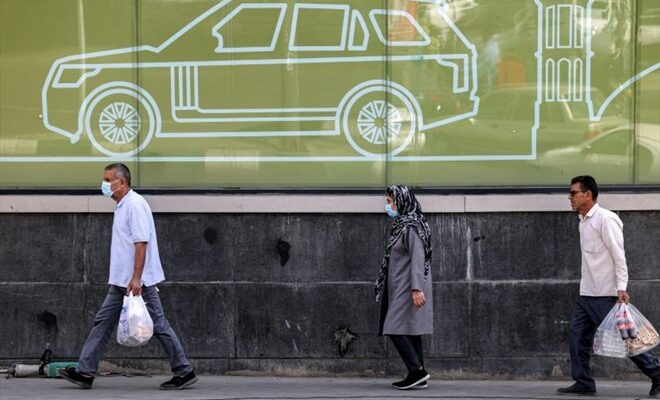Tehran under the snow, February 12, 2023 (AFP / Atta KENARE)
In just a few years, Iran has gone from a fashionable destination to a “strongly discouraged country” for Western travellers. A test for tourism professionals, who are trying to attract visitors from China or neighboring countries while waiting for better days.
The seduction operation had however started well: between 2014 and 2019, European tourists flocked to Isfahan, Shiraz or Persepolis, the jewels of ancient Persia.
Too optimistic, the Iranian authorities were aiming for 20 million visitors per year by 2025 against eight million in 2019.
But, quickly, the disappointments accumulated.
“The backsliding started after the United States withdrew from the nuclear deal in 2018,” said Farzaneh Mohammadi of Iran Railways. Then there were the November 2019 protests against power and the January 2020 crash of the Ukrainian plane shot down after taking off from Tehran by missiles from Iranian forces.
“Efforts were then launched to restore the situation, but recent events have dealt a fatal blow to tourism”, laments Ms. Mohammadi, referring to the protest movement which has spread in the country after the death in detention of Mahsa Amini, a 22-year-old Kurdish girl, in mid-September.
The strong media coverage of the demonstrations abroad “contributed to create an atmosphere of Iranophobia”, regrets Maryam Jalali, the vice-minister of Tourism, interviewed by AFP at the Tehran Tourism fair which was held last week. last.

An Iranian street vendor sells fresh beetroot juice at a bazaar in northern Tehran on January 25, 2023 (AFP/ATTA KENARE)
In such a context, “we will probably not have Western tourists this spring”, the best season to visit the country, underlines Ms. Mohammadi.
“When the foreign media keep repeating that there is unrest in the country, it discourages travelers,” also laments Amir-Hossein Rahimi, CEO of one of the country’s main private tour operators, Alaedin. Travel.
Mr. Rahimi hopes for a forthcoming relaunch of discussions on nuclear power, currently at a standstill, to “find a favorable environment” for tourism.
In the meantime, several countries, such as Germany and France, advise their nationals against traveling to Iran.
“Any visitor is exposed to a high risk of arrest, arbitrary detention and unfair trial”, warns Paris, while six French people, some of whom were traveling as tourists, are detained in the country’s prisons.
– Medical tourism –
The President of the Association of Hoteliers, Jamshid Hamzehzadeh, recently sounded the alarm on the occupancy rate of hotels, now below 20%, which prompted two-thirds of establishments to reduce the number of their employees.
The absence of Western travelers with high purchasing power will also continue to weigh on the activity, already at half mast, of sellers of carpets and other handicrafts in bazaars and major tourist sites.

Men and a woman walk along a road in central Tehran on September 26, 2022. (AFP/ATTA KENARE)
This is the case of the historic city of Yazd, located on the spice and silk route, where “nearly 80% of guides have lost their jobs since the pandemic” of Covid-19, laments Davoud Dehghani, the president of the local association of tourist guides, which has about 200 members.
He recalls the happy days: “when Yazd was declared a UNESCO World Heritage Site in 2017, the number of tourists exploded by more than 500%”, and the city found its place in the circuits of tour operators , between Shiraz and Isfahan.
“Fortunately”, adds Davoud Dehghani, there remains “a small number of foreign tourists”, coming “from Russia, China, Turkey or other countries” who are not at odds with the Islamic Republic.
For Deputy Minister Maryam Jalali, the priority now is to attract more visitors from neighboring countries, “who share a common culture and religion”.
A large number of them are Shiite pilgrims from Iraq, Lebanon, Kuwait or Pakistan who travel, often in groups, to the holy cities of Mashhad (north-east) and Qom (north).
Iran also wants to develop medical tourism by relying on its efficient health infrastructure, its lower prices and its expertise in cosmetic surgery, which are increasingly popular among Middle Easterners.
© 2023 AFP
Did you like this article ? Share it with your friends with the buttons below.




